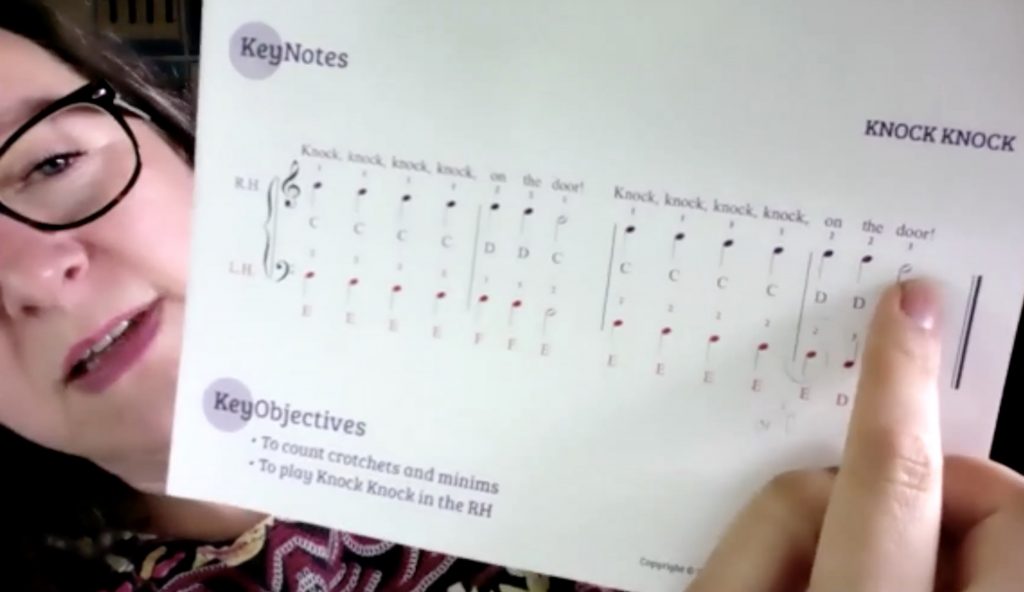Now that we’re used to Zoom for work and play and the dust is settled, we can reflect on the question – do Zoom music lessons really work?
When Melbourne started to respond to Covid 19 in early 2020, I began researching what was needed to make online music lessons work. I joined social media groups of teachers uncovering how to make it work. Zoom itself was developing as we were developing ways to use it for our teaching.
Some teachers couldn’t find a way to make their in person lessons translate to zoom. They resisted the limitations it placed on their usual ways of doing things. Some even quit teaching entirely.
Others found ways to embrace it, and make it work. Here’s what I learned.
Embracing teaching music on Zoom
- For some instruments, Piano, we have two cameras. One is above the teacher’s hands on the piano keys. The other is on the teacher’s face.
- These can spotlighted these as needed, which means we show students a full screen image of their hands demonstrating. This is actually a better view of the teacher’s hands than they get in a socially-distanced face-to-face lesson.
- We can easily share teaching materials like Powerpoints, sheet music and recordings of music directly from my computer, without having to fiddle around with other equipment like we would in a face to face lesson.
- It’s really easy to record a Zoom lesson. We provide recordings to students, which they can use when they practice. Some students really take advantage of this, and might watch the lesson (or parts of it) many times over between lessons.
- For parents, there’s the advantage of no travel, parking, waiting or entertaining siblings away from home, while someone has their lesson.

Group Zoom music Lessons
All of the points for private lessons above apply to group classes. Also:
- We use breakout rooms to visit individual students, or small groups, while other students are practicing. This provides a break from the larger group and we can easily focus in on supporting specific areas of playing that each student needs. We sometimes put students in pairs, and task them with helping each other perform the song better. This improves both their listening skills and communication skills.
- We use the mute/unmute function which allows us to keep the background noise to a minimum, and ensure that at the right times, everyone can be heard. Students who might struggle to stay quiet from time to time in class can still participate without distracting other students.
But what about the Zoom time lag?
It’s true that there is a small time delay across zoom. The length of the delay is impacted by a number of factors including the internet connection quality of both the students and teacher. So clapping a rhythm together, or playing in time with others across Zoom aren’t going to have great results.
But what are we trying to achieve by doing these activities? Clapping rhythms together is usually done to demonstrate and reinforce reading and/or memorising rhythms. And there are other ways to achieve this. A combination of call and response (teacher first, then students) and selectively muting students can get you there. You can watch muted students clapping a rhythm to see if they have mastered it, avoiding the cacophony you might get if everyone was unmuted.
So looking at what you are trying to achieve with teaching practices and finding other ways to get there removes the frustration that many teachers felt when first moving to Zoom.
How do we point to the music for the student?
- The high tech option works great – you can point to shared PDF
- The low tech option also works great – we hold my copy of the close to the camera and point, the old fashioned way, with a finger or pencil. This way, they see the notes in question even larger than in their own book.